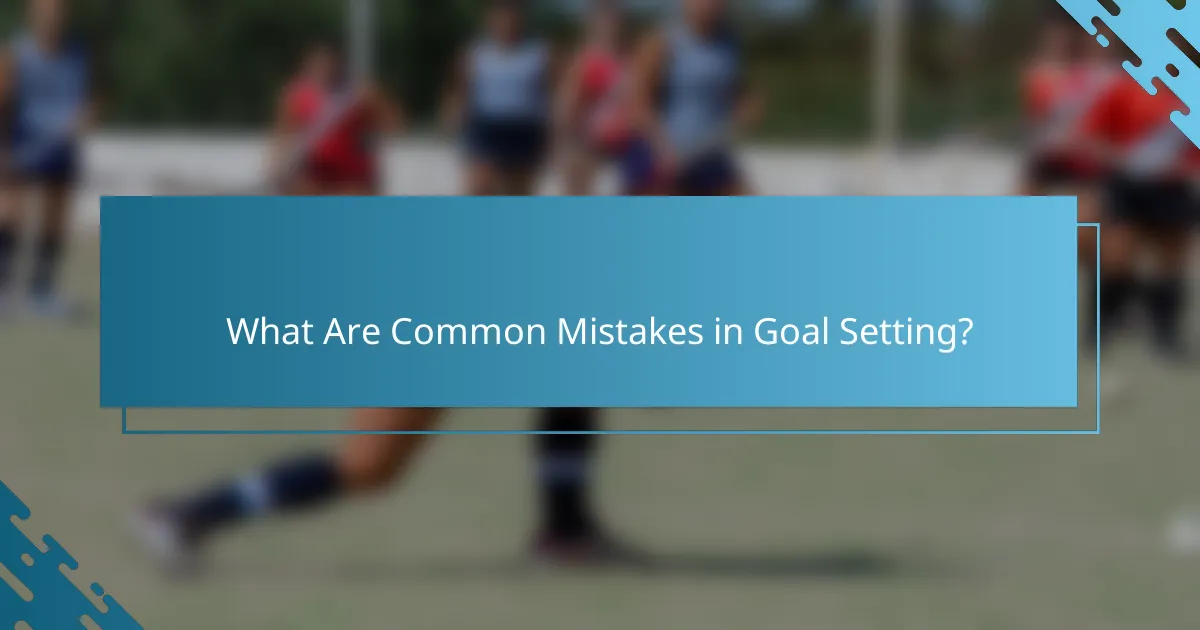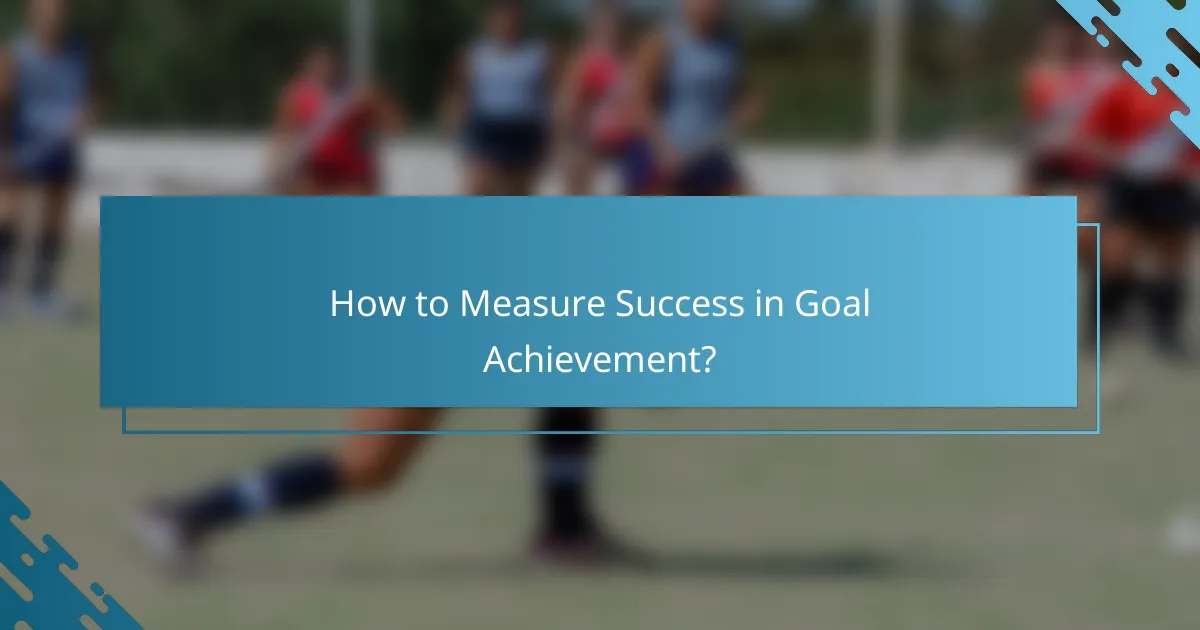Goal setting is a fundamental strategy for athletes seeking long-term success and growth in their performance. By establishing clear, actionable objectives, athletes can maintain focus, track their progress, and stay motivated throughout their training journey. Combining long-term aspirations with short-term milestones creates a structured approach that fosters continuous improvement and achievement.

What Are Effective Goal Setting Strategies for Athletes?
Effective goal setting strategies for athletes involve creating clear, actionable objectives that guide training and performance. These strategies help athletes focus their efforts, measure progress, and ultimately achieve long-term success.
SMART Goals Framework
The SMART goals framework is a widely recognized method for setting effective objectives. SMART stands for Specific, Measurable, Achievable, Relevant, and Time-bound, ensuring that goals are clear and attainable.
For example, instead of saying “I want to run faster,” an athlete could set a SMART goal like “I want to improve my 5K time by 30 seconds within the next three months.” This clarity helps athletes maintain focus and motivation.
Visualization Techniques
Visualization techniques involve mentally rehearsing performance scenarios to enhance confidence and focus. Athletes can visualize themselves successfully completing a race or executing a perfect technique, which can improve actual performance.
To practice visualization, athletes should find a quiet space, close their eyes, and vividly imagine their goals. Regular sessions, ideally daily, can reinforce positive outcomes and prepare the mind for competition.
Accountability Partnerships
Accountability partnerships involve working with a training partner or coach to stay committed to goals. These partnerships create a support system that encourages athletes to maintain their focus and push through challenges.
Choosing a partner with similar goals can enhance motivation. Regular check-ins and shared progress updates can help both partners stay on track and celebrate achievements together.
Progress Tracking Methods
Progress tracking methods are essential for monitoring advancements toward goals. Athletes can use journals, apps, or spreadsheets to log workouts, performance metrics, and personal reflections.
For effective tracking, athletes should set specific intervals for review, such as weekly or monthly. This allows for adjustments to training plans based on what is working and what needs improvement, ensuring continuous growth.

How Can Long-Term Goals Enhance Athletic Performance?
Long-term goals can significantly enhance athletic performance by providing a clear direction and motivation for athletes. These goals help athletes focus their training efforts, track progress, and maintain commitment over time.
Focus on Skill Development
Setting long-term goals encourages athletes to prioritize skill development, which is crucial for improving performance. By breaking down complex skills into manageable milestones, athletes can systematically work on their technique and execution.
For example, a swimmer might set a long-term goal to improve their stroke efficiency. This goal can be divided into smaller objectives, such as mastering breathing techniques or refining turns, allowing for focused practice sessions.
Encourage Consistency in Training
Long-term goals foster consistency in training, which is essential for athletic growth. When athletes have a clear target, they are more likely to adhere to a regular training schedule, leading to gradual improvements over time.
To maintain consistency, athletes should establish a training plan that aligns with their long-term objectives. For instance, a runner aiming to complete a marathon might follow a structured program that gradually increases mileage while incorporating rest days to prevent burnout.
Build Mental Resilience
Long-term goals help athletes build mental resilience by teaching them to cope with setbacks and challenges. The journey toward achieving these goals often involves obstacles, and learning to navigate these can strengthen an athlete’s mindset.
For example, an athlete might face injuries or performance plateaus while pursuing their long-term goals. Developing strategies to overcome these hurdles, such as seeking support from coaches or adjusting training methods, can enhance their mental toughness and commitment to their sport.

What Role Does Short-Term Goal Setting Play?
Short-term goal setting is crucial for maintaining focus and direction in the pursuit of long-term success. It breaks down larger objectives into manageable tasks, allowing for measurable progress and adjustments along the way.
Immediate Feedback and Adjustments
Short-term goals provide immediate feedback, which is essential for refining strategies and approaches. By assessing progress frequently, athletes can identify what works and what doesn’t, enabling timely adjustments to their training or performance plans.
For example, if a runner sets a weekly target for distance, they can evaluate their performance at the end of each week. If they consistently fall short, they can modify their training schedule or technique to better meet their goals.
Motivation Boosts Through Quick Wins
Achieving short-term goals generates quick wins that significantly boost motivation. These small successes create a sense of accomplishment, reinforcing commitment to the overall long-term objectives.
For instance, a weightlifter aiming to increase their lift can set a goal to add a small increment, like 2.5 kg, each week. Each successful lift not only contributes to their larger goal but also enhances their confidence and drive to continue improving.

How to Choose the Right Goals for Athletic Growth?
Selecting the right goals for athletic growth involves understanding your current abilities and defining clear, achievable objectives. Focus on specific, measurable targets that align with your long-term aspirations to ensure consistent progress and motivation.
Assessing Personal Strengths and Weaknesses
Begin by evaluating your current athletic performance to identify strengths and weaknesses. Consider aspects such as speed, endurance, strength, and technique. This self-assessment can be done through performance metrics, feedback from coaches, or personal reflection.
Once you have a clear picture of your abilities, prioritize areas for improvement. For instance, if endurance is lacking, set goals that focus on increasing stamina through targeted training sessions. Regularly revisit this assessment to track progress and adjust goals accordingly.
Aligning Goals with Athletic Aspirations
Your goals should reflect your broader athletic aspirations, whether it’s competing at a higher level, improving personal records, or mastering specific skills. Ensure that your objectives are not only realistic but also inspiring, as this will help maintain motivation over time.
For example, if your aspiration is to compete in a marathon, set incremental goals such as completing a half-marathon or improving your weekly mileage. This approach allows for gradual growth while keeping your ultimate vision in focus. Remember to balance short-term and long-term goals to create a sustainable path for success.

What Are Common Mistakes in Goal Setting?
Common mistakes in goal setting can hinder progress and lead to frustration. Recognizing these pitfalls is essential for achieving long-term success and growth in any endeavor, including athletics.
Setting Vague Goals
Vague goals lack specificity, making it difficult to measure progress and stay motivated. For example, stating “I want to be fit” does not provide a clear target. Instead, aim for specific goals like “I will run 5 kilometers in under 30 minutes within three months.”
To avoid vagueness, utilize the SMART criteria: Specific, Measurable, Achievable, Relevant, and Time-bound. This framework helps clarify your objectives and sets a clear path for achievement.
Neglecting to Review Progress
Failing to regularly review your progress can lead to stagnation and missed opportunities for adjustment. Regular check-ins, whether weekly or monthly, allow you to assess what is working and what needs change.
Consider keeping a journal or using an app to track your milestones and setbacks. This practice not only keeps you accountable but also helps you celebrate small victories along the way.
Overloading with Too Many Goals
Setting too many goals at once can overwhelm you and dilute your focus. When you try to achieve several objectives simultaneously, you may find it challenging to make significant progress in any one area.
To manage your goals effectively, prioritize them based on importance and feasibility. Aim for a manageable number, such as two to three key goals at a time, allowing for deeper commitment and better results.

How to Measure Success in Goal Achievement?
Measuring success in goal achievement involves assessing progress against predefined objectives. This can be done through various performance metrics and self-reflection practices that provide insights into both accomplishments and areas for improvement.
Performance Metrics
Performance metrics are quantifiable measures used to evaluate the success of goal achievement. Common metrics include completion rates, time taken to achieve goals, and quality of outcomes. For example, if an athlete sets a goal to improve their sprint time, tracking the seconds shaved off their previous best can serve as a clear performance metric.
When selecting metrics, ensure they are specific, measurable, achievable, relevant, and time-bound (SMART). This approach helps in maintaining focus and adjusting strategies as needed. Regularly reviewing these metrics can highlight trends and inform future goal-setting.
Self-Reflection Practices
Self-reflection practices involve regularly assessing one’s thoughts, feelings, and behaviors related to goal achievement. This can include journaling about experiences, conducting weekly reviews, or using guided reflection questions to evaluate progress and setbacks. For instance, an athlete might reflect on their training sessions to identify what techniques worked best and what needs adjustment.
Incorporating self-reflection into your routine can enhance self-awareness and motivation. Consider setting aside time each week to reflect on your goals, noting both successes and challenges. This practice not only fosters personal growth but also helps in recalibrating goals to ensure they remain aligned with your aspirations.

What Are the Benefits of Goal Setting in Sports?
Goal setting in sports provides athletes with a clear direction and measurable objectives, enhancing their performance and personal growth. By establishing specific targets, athletes can track their progress, maintain motivation, and ultimately achieve long-term success.
Increased Focus and Motivation
Setting goals helps athletes concentrate on their training and performance by providing a clear roadmap. When athletes have defined objectives, they are more likely to stay committed to their routines and push through challenges.
To enhance focus, athletes should break down larger goals into smaller, manageable milestones. For example, a long-term goal of improving a marathon time can be divided into weekly training targets that gradually increase in intensity.
Additionally, celebrating small victories along the way can boost motivation. Recognizing achievements, no matter how minor, reinforces commitment and encourages athletes to maintain their efforts toward their ultimate goals.
